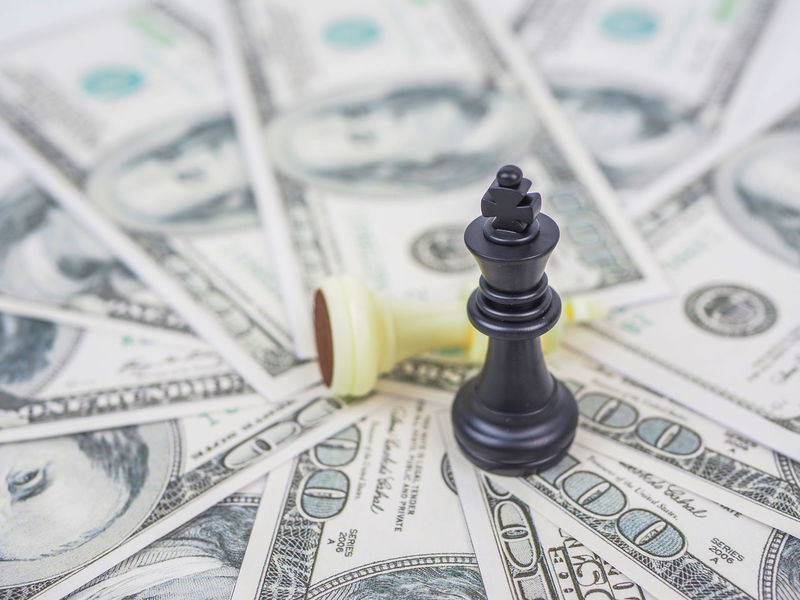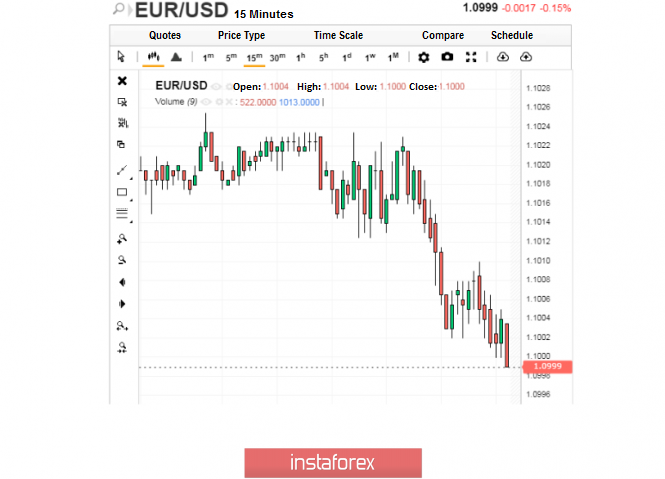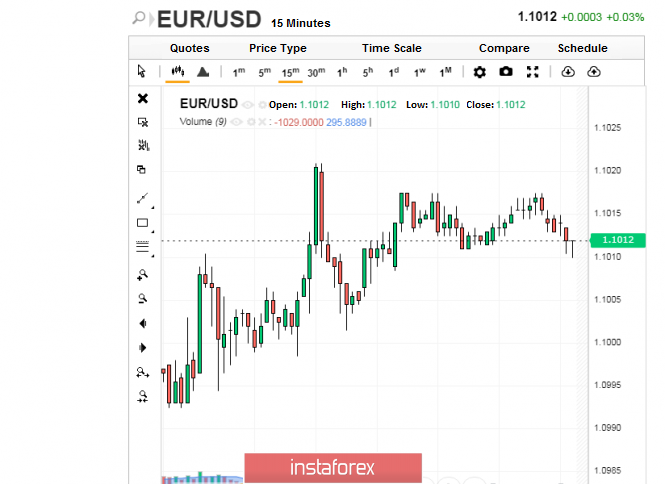
After the US Federal Reserve's meeting, which became a key event for the US currency this week, the dollar confidently rushed to conquer the peaks once again. Meanwhile, the European currency, which does not have such strong support from the Eurozone economy, is forced to work around it, moving towards its goal in small steps.
The long-awaited meeting of the US regulator was expected to keep the key rate unchanged from 1.5% to 1.75%. According to the Fed, this range can support economic growth in the country. The new solution was only a change in inflation expectations. According to the revised data, the current monetary policy (DCP) should keep US inflation close to the 2% target. Earlier, Fed head Jerome Powell said that a reduction in the key rate is unlikely during 2020, as it is only possible in the case of a serious deterioration in economic report.
Following the meeting, the REPO rate was also decided to be raised to 1.5%. The Fed stressed that the REPO operations will last until May 2020. The current situation had a positive impact on the dollar, which has grown slightly. However, in general, the currency's reaction was noted as neutral.
During the current week, the dollar pleased the market with positive dynamics, and on Wednesday, January 29, it reached near the two-month highs. Now, the currency is perceived by investors as a protective asset, and the dollar justifies this status. According to analysts, the demand for the currency as a safe-haven asset remains against the epidemic of the coronavirus in China.
On the other hand, the European currency can not boast of such demand. According to experts, the markets continue to get rid of the euro. In many ways, this is facilitated by the US macrostatistics, which is a catalyst for the growth of the dollar. In such a situation, the euro has to make every effort to catch up with the competitor in the EUR/USD pair.
The news background at the beginning of the week, including information on orders for durable goods in the United States, was favorable for the dollar. The strengthening of the currency was supported by the relatively positive economic indicators, which confirmed its reputation as a safe asset. According to the report, the volume of orders for durable goods in the United States has increased by 2.4%. Experts emphasize that this is much higher than the previous indicator. In addition, analysts were also pleased with the data on housing prices, which showed an acceleration from the previous 2.2% to 2.6%. In December 2019, total orders increased by 2.0% as compared to November 2019. On the other hand, other indicators slightly disappointed the market: orders for goods excluding defense products decreased by 2.5%, orders for goods excluding vehicles fell by 0.1%, and orders of goods excluding defense and aviation orders sank by 0.9%. However, such a "trifle" could not shake the dollar's position: the dollar was still on the positive side, not conceding to the euro.
Experts say that the single currency failed to circumvent the US one. Market participants continued to sell off the euro, and then afterwards, the sellers loosened up their grip a little. This contributed to the departure of the EUR/USD quotes from the current lows. However though, the general trend is aimed at reducing the European currency, analysts emphasize.
At the beginning of the week, the EUR/USD pair sharply entered a downward trend, falling from the highs to 1.1018–1.1019. It turned out that this is not the limit: the fall was just beginning.
On Tuesday, January 28, the EUR/USD pair overcame the psychologically important level of 1.1000. The pattern associated with this level has been observed on the market for a long time, sometimes dropping the quotes of the pair to the lows, and then allowing them to reach the next peaks. The tandem sank to 1.0999 and below, moving downwards.

The situation did not improve on Wednesday, January 29. The indicators remained in the same range, causing market anxiety. A positive note was made on the morning of Thursday, January 30 though: the EUR/USD pair overcame the attraction of the bottom, and went up to the level of 1.1012. The tandem currently runs within these limits.

According to experts, the dollar will retain its advantage in the near future. Moreover, they predict that the dollar will strengthen in the run-up to the US presidential election. Meanwhile, their opponents believe that the election race, along with the slowdown in the US economy and the continued monetization of the budget deficit by the Fed, will put pressure on the currency. Analysts believe that these factors may weaken the king of world currencies. In the EUR/USD pair, dollar will grow, while euro will have to pull up to catch up with the competitor. To do this, euro must use any means, but experts sum up that more often, it acts gently not directly.





















